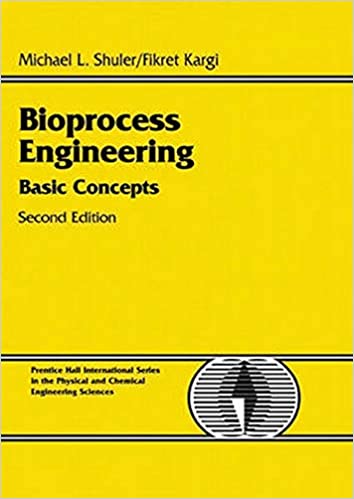
Bioprocess Engineering 2nd Edition by Fikret Kargi,Michael Shuler
Edition 2ISBN: 9780130819086
Bioprocess Engineering 2nd Edition by Fikret Kargi,Michael Shuler
Edition 2ISBN: 9780130819086 Exercise 18
In a chemostat you know that if a culture obeys the Monod equation, the residual substrate is
independent of the feed substrate concentration. You observe that in your chemostat an in-
crease in causes an increase in the residual substrate concentration. Your friend suggests
causes an increase in the residual substrate concentration. Your friend suggests
that you consider whether the Contois equation may describe the situation better. The Contois
equation (eq. 6.36) is:
a. Derive an expression for S in terms of
 and X for a steady-state CFSTR
and X for a steady-state CFSTR
(chemostat).
b. Derive an equation for S as a function of

c. If
 increases twofold, by how much will S increase?
increases twofold, by how much will S increase?
independent of the feed substrate concentration. You observe that in your chemostat an in-
crease in
 causes an increase in the residual substrate concentration. Your friend suggests
causes an increase in the residual substrate concentration. Your friend suggeststhat you consider whether the Contois equation may describe the situation better. The Contois
equation (eq. 6.36) is:

a. Derive an expression for S in terms of
 and X for a steady-state CFSTR
and X for a steady-state CFSTR(chemostat).
b. Derive an equation for S as a function of

c. If
 increases twofold, by how much will S increase?
increases twofold, by how much will S increase?Explanation
If a culture obeys the Monod equation in...
Bioprocess Engineering 2nd Edition by Fikret Kargi,Michael Shuler
Why don’t you like this exercise?
Other Minimum 8 character and maximum 255 character
Character 255


